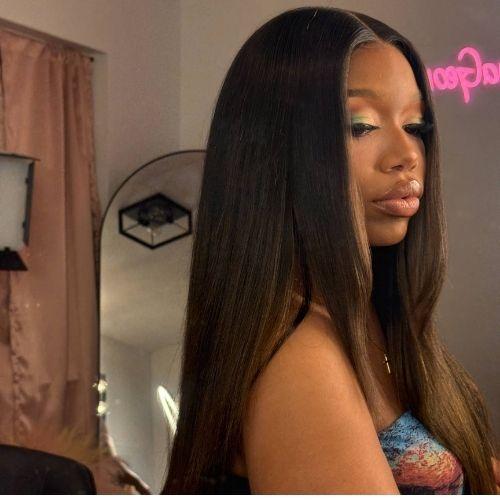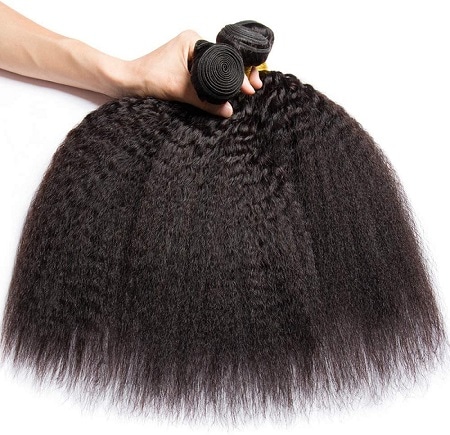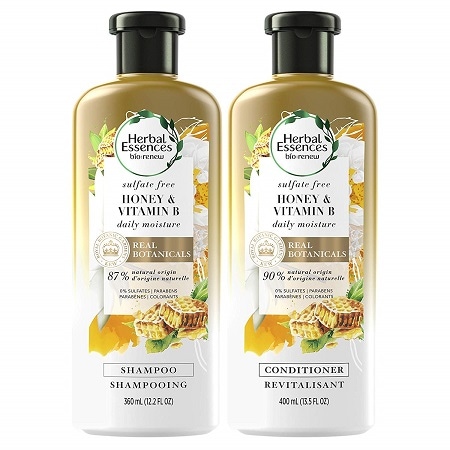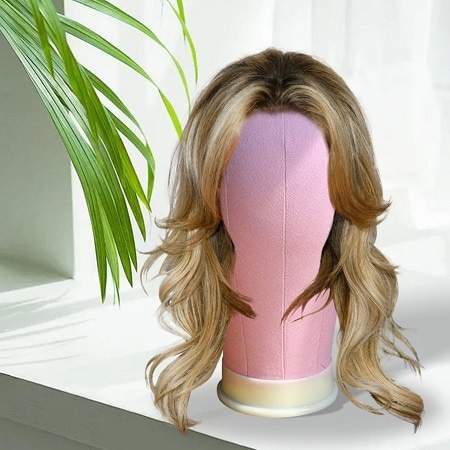In the ever-changing world of beauty, one element that has consistently captivated enthusiasts is Yaki hair. It brings textured beauty to hairstyles, providing a natural and versatile look. If you're unfamiliar with "yaki hair" and want to know more about it and its different styles, this guide is perfect for you.
Let's get started.
What Is Yaki Hair?

Model: @theblackreginageorge22 | Wig by UNice
Yaki hair is a hair texture that mimics the texture of chemically straightened or relaxed Afro-Caribbean hair. The term “Yaki” is derived from the Japanese word meaning “grilled” or “toasted,” and it is used in the context of hair to describe a straighter, more textured look.
Typically used in wigs, weaves, and extensions, Yaki hair supplies a natural alternative to straight hair without the need for chemical treatments. There are different kinds of yaki hair, including Yaki straight, Yaki body wavy, and Yaki curly, etc. to meet different preferences and styles. It enables individuals to achieve a number of looks while keeping a texture similar to natural hair or desired beauty.
Is Yaki Hair Human Hair?
Yes, "Yaki hair" generally refers to a type of hair texture used in hair extensions and wigs. Yaki hair can be made from human hair or synthetic fibers. Check the product description or the label to see what the exact composition is. If it says “Yaki human hair”, then it’s made from human hair with the same texture as the Yaki style.
Why Yaki Hair Is So Trending?

Image: Wig by UNice
Yaki hair is popular for several reasons, particularly in terms of hair extensions and weaves. Here are some factors contributing to its popularity:
Natural Appearance: Yaki hair is a type of hair used in weaves and extensions to mimic the texture of Afro-Caribbean or African-American hair, providing a natural look that closely resembles the wearer's hair.
Versatility: Yaki hair comes in a wide range of textures, including yaki straight hair, yaki curly hair, yaki wave hair, and so on. And it can be styled in a variety of ways to suit different hair types and styles.
Ease of Styling: Yaki hair is versatile and easy to style. You can straighten or curl it for different hairstyles, giving you the freedom to switch up your look whenever you want.
Low Maintenance: Yaki hair is easier to care for than chemically straightened hair. It does not require as much upkeep and keeps its shape even in humid conditions. This makes it a popular choice for many people.
How Long Does Yaki Hair Last?

The longevity of Yaki hair extensions or wigs depends on several factors, such as the quality of hair, maintenance, wear frequency, etc.
With proper care, high-quality Yaki hair extensions or wigs made from human hair can last several months to a year or more. Synthetic yaki hair usually has a shorter lifespan, typically lasting a few months. Always follow the care instructions provided by the manufacturer for the specific product you have. This will ensure that your Yaki hair extensions or wigs remain in excellent condition for as long as possible.
What's The Difference Between Yaki Hair And Remy Hair?
Yaki hair and Remy hair refer to different types of human hair used in the production of wigs, weaves, and extensions. But they have some differences.
Yaki hair is a type of hair that has a chemically relaxed texture similar to that of Afro-Caribbean hair. Yaki hair has a thicker, coarse texture and is commonly used to achieve a natural, relaxed look.
Remy hair refers to the method by which the hair is collected. It is not a specific texture but rather a quality indicator. Remy's hair is known for its smooth, silky texture because the cuticles are intact and aligned in the same direction.
How To Care For Yaki Hair?
Caring for Yaki hair requires specific attention to maintain its appearance and longevity. Here are some general tips for caring for Yaki hair:
Washing

It is recommended to use a sulfate-free shampoo and a moisturizing conditioner to avoid stripping the hair of natural oils, which can cause dryness. Before washing, gently detangle the hair to minimize tangling.
Conditioning

To keep your Yaki hair moisturized, it's essential to deep condition it regularly. You can also use a leave-in conditioner to maintain hydration between washes. However, make sure not to apply the conditioner directly to the roots as it can weigh down your hair and make it look greasy.
Drying
To avoid heat damage, air-dry your Yaki hair as often as possible. If you have to use heat, set the heat to a low setting on your hair dryer or any other styling tool. Pat the hair dry using a towel instead of rubbing it as rubbing can create friction and tangling.
Brushing
Use a wide-tooth comb or a brush with soft bristles to detangle Yaki hair, starting from the tips and working your way up to the roots. Be gentle when brushing to avoid unnecessary stress on the hair.
Storage

Yaki hair extensions and wigs should be stored in cool, dry places when not in use to avoid tangling or damage. If possible, store your Yaki extensions on a model head or other form to help keep them in shape.
Some Popular Yaki Hair Wigs On UNice Hair
UNice Hair offers a wide selection of high-quality Yaki hair wigs, with the Yaki straight wig being one of the most popular choices. Known for its natural texture and versatility, the Yaki straight wig mimics the appearance of relaxed, textured hair, providing a realistic and stylish look.
Conclusion
As we come to the end of our journey into the world of Yaki hair, let's take a moment to appreciate the beauty and diversity it adds to the realm of hairstyling. Whether you're an experienced Yaki enthusiast or a newcomer, the versatility of Yaki hair encourages you to explore and embrace a style that goes beyond the surface.


